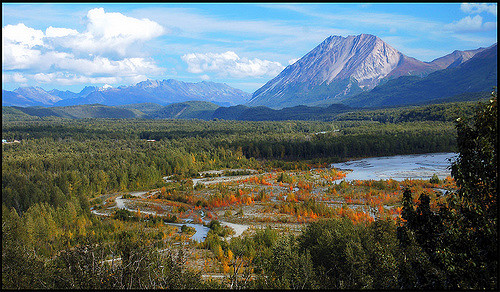
Wishbone Hill Expired Mining Permit Challenged
Trustees for Alaska represented five community and conservation groups before the District Court of Alaska in late January. The court was hearing argument in a case Trustees brought that challenges the federal Office of Surface Mining Reclamation and Enforcement’s (OSM) decision that allows Usibelli Coal Mine, Inc. to operate under an expired permit at the proposed Wishbone Hill strip mine in the Matanuska Valley. The case is about protecting the health and safety of the community from the impacts of coal mining. We expect a decision in the coming months.
Under both federal and state coal mining laws, operations must begin under coal mining permits within three years or the permit ends. The reason for the permit deadline is so that the permits contain modern, up-to-date environmental reclamation standards to protect the environment and surrounding communities. At Wishbone Hill, the permit was originally issued in 1991 and operations didn’t begin until 2010, when the company began building a road and clearing the area. So the permit expired.
The Office of Surface Mining Reclamation and Enforcement (OSM) is a federal agency charged with overseeing state coal mining operations. It is responsible for ensuring state programs comply with the law. To stop the unpermitted coal mining that began in 2010, local groups asked OSM to step in. In the summer of 2012, residents in the Mat Valley applauded a preliminary decision by OSM that the decades-old mining permit for Wishbone Hill was no longer valid and the company would have to halt operations unless it obtained a new permit. But over two years later, in a decision that shocked and disappointed local residents, OSM reversed its decision and determined that the permit was still valid after so many years. The lawsuit challenges OSM’s reversal.

Extensive farming activities lie within miles of the proposed mines in the Matanuska Valley. Photo by Tim Leach, courtesy of Mat Valley Coalition.
When the original mining permit for Wishbone Hill was issued in the early 1990s, the area was a completely different place. Fewer people lived near the mine. Now, several residential neighborhoods rest within one mile of it; approximately 900 homes would be within a mile of the mine. Many of these people moved to the Matanuska Valley to live in a quiet, rural environment. Having an industrial coal mine as a neighbor would change all that. Usibelli’s plans for Wishbone Hill involve the use of explosives to break up the rock. Along with industrial equipment and wash plant operations, the noise from operations will be virtually nonstop and the coal will be trucked on large trucks on the public roads. Many of these residences and the town of Palmer are downwind from the proposed mine. Coal dust threatens peoples’ health, especially for small children and the elderly. The mine will also divert water from salmon-bearing streams, potentially contaminate drinking wells, and has already caused people to move away. Communities need to have a full say in how any mining would affect their life.
Read all the stories on Wishbone Hill.


